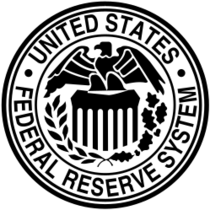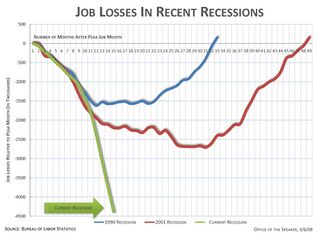Finance:Discount policy
Discount policy is tool taken by the central bank to control the money circulation by raising or lowering interest rates.[1] If the Central Bank raised bank rates, the aim is to reduce money supply in the economy.[1] With the high rates, people are expected to not take out loans and save their money in bank.[1] Therefore, the amount of money will be reduced.[1] Policy to raise bank rates is used to press inflation.[2] Meanwhile, if the central bank lowers bank rates, it aims to increase the amount of money supply.[1] With the low rates, people are not expected to save their money in bank.[1] Thus, the amount of money circulating in the society will increase.[1] The decline in bank rates made by the Central Bank if the economy goes into a recession or if the economy is run into deflation.[1]
The United States discount rate policy
The United States Federal Reserve System lends money to eligible commercial institution called discount window, Purposely created in 1913 as a mean to operate the central bank in The United States.[3] The interest on loans given out to commercial institutions are discount rate, which is a monetary policy tool used by the Federal Reserve to stimulate the U.S economy.[4] Commercial banks mark up interest from the loans taken from the discount window to gain profit from interest on loan taken out by the public. With the high interest rates, people are less expected to take out loans. Thus, there are less money circulating in the economy, causing it to move in to a recessionary state. Decline in interest rates are made by the Central Bank if the economy goes into a recession. The Federal Reserve have varieties of tools along with the discount rate to manage and relieve tension in the economy.[5]
Usage of the discount rate during The Great Recession
According to UC Berkeley researchers, commercial institutions started to give loan to subprime borrowers in order to increase profits on risky investments. Since they were more likely to default on their loans, banks were losing money which resulted in increase interest rates.[6] Consequently, interest rate prices are higher than usual, people weren't taking out loans causing the economy to be contractionary.[7] In turn, the Federal Reserve System recognized the problem and took counter measures to intervene with the downsizing economy. They decreased the interest rates at the discount window to bail out the economy during The Great Recession.[8] Since the commercial banks are able to retrieve loans at a lower rate, this waterfalls down to the general public to be able to circulate money in the economy. Monetary policy used by The Central Banks caused the economy to thrive from the recession by utilizing the discount rate that bails out commercial banks.[9]
References
- ↑ 1.0 1.1 1.2 1.3 1.4 1.5 1.6 1.7 Eeng Ahman dan Epi Indriani. Ekonomi dan Akuntasi: Membina Kompetensi Ekonomi. PT Grafindo Media Pratama. p. 211. ISBN 9797584194.
- ↑ "Transmisi Kebijakan Moneter". http://www.bi.go.id/id/moneter/transmisi-kebijakan/Contents/Default.aspx.
- ↑ Wellings, George M.. "Federal Reserve Act (1913) < A Brief History of Central Banking in the United States - Edward Flaherty < General < Essays < American History From Revolution To Reconstruction and beyond". http://www.let.rug.nl/usa/essays/general/a-brief-history-of-central-banking/federal-reserve-act-(1913).php.
- ↑ U.S, Government (June 22, 2015). "The Federal Reserve Discount Window". https://www.frbdiscountwindow.org/pages/general-information/the-discount-window.
- ↑ "Federal Reserve Board - Discount Rate". February 26, 2019. https://www.federalreserve.gov/monetarypolicy/discountrate.htm.
- ↑ Coghlan, Erin (September 19, 2018). "What Really Caused the Great Recession?". http://irle.berkeley.edu/what-really-caused-the-great-recession/.
- ↑ "What Are the Forces Behind Interest Rates and What Causes Them to Rise?" (in en). https://www.investopedia.com/insights/forces-behind-interest-rates/.
- ↑ "Fed Lowers Discount Rate to Calm Markets". NPR.org. August 17, 2007. https://www.npr.org/templates/story/story.php?storyId=12866844.
- ↑ Andrews, Edmund L. (2008-12-16). "Fed Cuts Key Rate to a Record Low". The New York Times. https://www.nytimes.com/2008/12/17/business/economy/17fed.html.
 |



